Cyber Security News Aggregator
.Cyber Tzar
provide acyber security risk management
platform; including automated penetration tests and risk assesments culminating in a "cyber risk score" out of 1,000, just like a credit score.8 Types of Fingerprints & How Rare They Are
published on 2024-02-07 08:00:00 UTC by Simon BurgeContent:
Fingerprints, those intricate ridges on our fingertips, are nature’s unique identity cards for each person.
Beyond their utilitarian purpose in helping us grip objects, fingerprints serve as a distinctive marker that sets each individual apart.
This article delves into the fascinating world of fingerprints, exploring their uniqueness, the various types of fingerprints that exist, and just how rare each type of fingerprint truly is.
Why do we Have Fingerprints?
This seemingly simple question unravels a fascinating narrative of evolution and adaptation.
At the core, fingerprints are a product of nature’s ingenious design to meet the demands of survival and enhance our ability to interact with the world.
Fingerprints serve a practical purpose in our daily lives, primarily linked to our need for grip and dexterity.
As our primate ancestors transitioned from moving on all fours to an upright stance, the demand for more sophisticated ways of interacting with the environment increased.
The evolution of fingerprints is deeply intertwined with our journey from survival to mastery of our surroundings.
As our ancestors started crafting tools, creating art, and engaging in complex tasks, the need for a reliable grip became essential.
Nature responded by endowing us with these intricate patterns that not only aid in grasping objects but also serve as unique identifiers.
Why are There Different Types of Fingerprints?
The range in different types of fingerprint patterns stems from a combination of genetic factors, environmental influences during foetal development, and random chance.
Nature’s intricate dance of genetics ensures that no two individuals, except identical twins, share the same set of fingerprints.
But why are there different types of fingerprints?
The variations in fingerprint types are essentially different ridge patterns that develop as a result of the interaction between genetic coding and external factors during foetal growth.
The epidermal ridges form unique patterns as the skin develops in utero, influenced by a combination of genetic instructions and environmental conditions.
The primary fingerprint patterns are arches, loops, and whorls, and the diversity among them arises due to the way the ridges flow and recurve.
Arches are characterised by ridges that flow from one side to the other without making a backward turn, loops involve ridges that recurve back toward the origin, and whorls exhibit circular or spiral patterns.
These patterns manifest as a result of the interplay of genetic traits passed down from parents and the individual’s response to the surrounding conditions in the womb.
The randomness and complexity of genetic combinations lead to the incredible diversity of fingerprint types.
It’s a testament to the uniqueness of each individual, even among identical twins who, despite sharing nearly identical genetic material, can exhibit varying types of fingerprint patterns.
8 Types of Fingerprints
Plain Arch
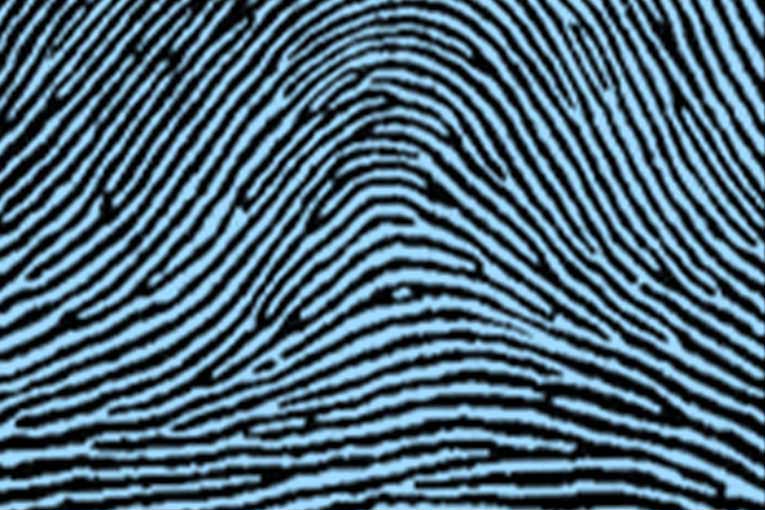
Plain arch fingerprints are characterised by smooth ridge flow from one side to the other without significant upthrusts or recurves.
Although less frequent than loops, they appear on the middle and ring fingers, making up approximately 5% to 10% of fingerprint patterns.
Tented Arch
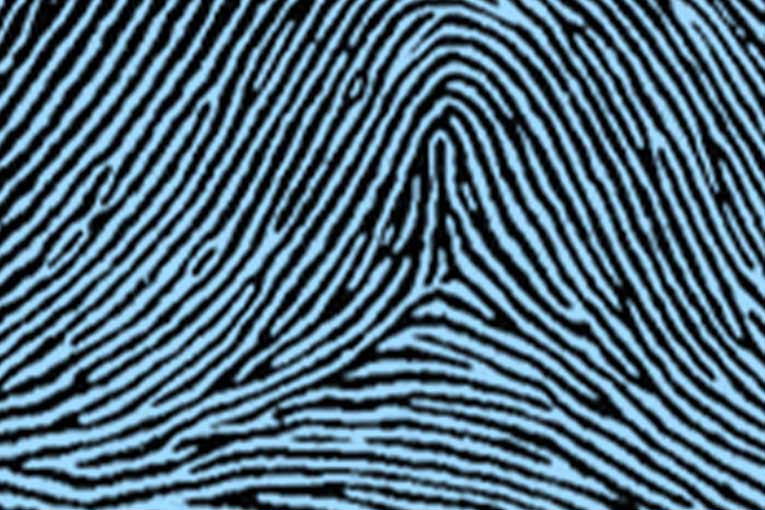
Tented arch fingerprints exhibit a distinctive upward thrust or spike in the centre, resembling the shape of a tent.
Considered relatively rare, these patterns are typically found on the index and middle fingers and occur in approximately 1% to 5% of fingerprint patterns.
Plain Whorl

Within the broader category of whorls, plain whorl fingerprints have a circular or spiral ridge arrangement with prominent delta points at the pattern’s edges.
One of the most common types of fingerprints with about 20% to 30% of fingerprint patterns, they can appear on any finger.
Radial Loop
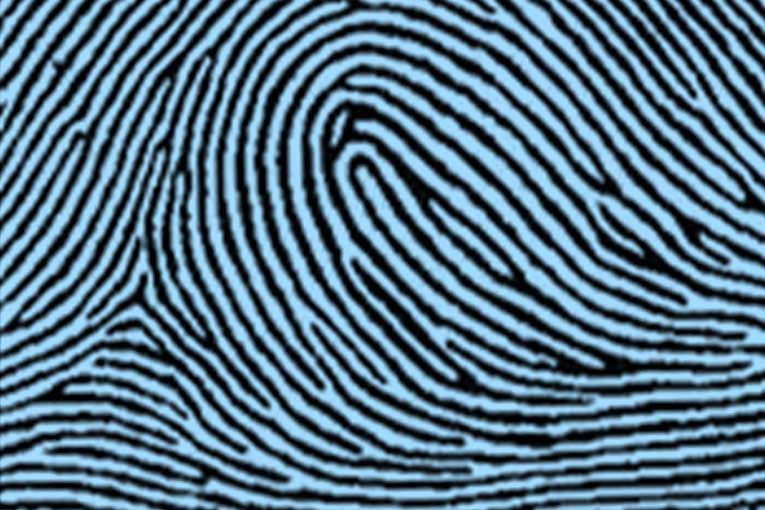
Radial loop fingerprints, common and often found on the left hand, feature ridges flowing toward the thumb.
Two types exist: plain radial loops with smooth ridge flow and tented radial loops with a more pointed centre.
Radial loops are the most common types of fingerprints, and constitute around 65% of all fingerprint patterns.
Ulnar Loop

The ulnar loop, a counterpart to the radial loop, exhibits ridges flowing toward the pinky finger.
Like radial loops, they can be plain or tented and appear on any finger.
Ulnar loops are more common on the right hand.
Double Loop
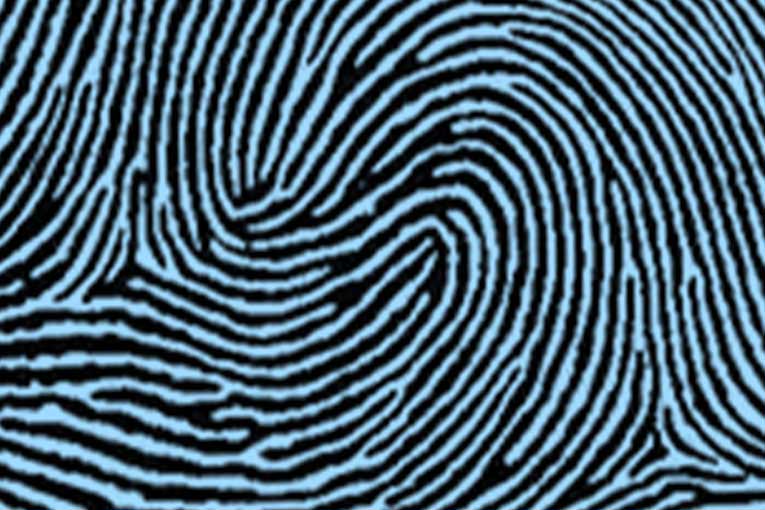
A less common pattern, the double loop, displays two separate loop formations within a single fingerprint.
Occurring less frequently than radial or ulnar loops, it adds a layer of complexity and uniqueness to fingerprint analysis, representing about 5% to 7% of patterns.
Central Pocket Loop
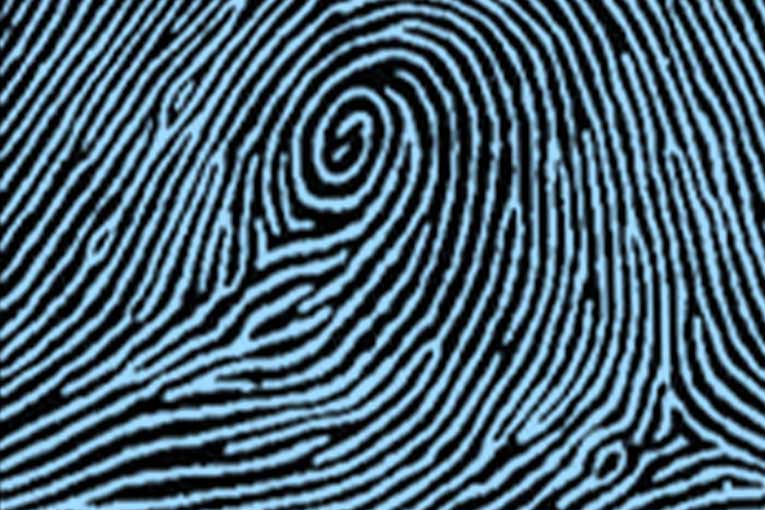
Central pocket loop fingerprints encapsulate a central dot or circular feature within the loop pattern, often found on the thumb and index fingers.
While less common, they contribute to the diversity of fingerprint patterns, making up about 5% to 10% of patterns.
Accidental
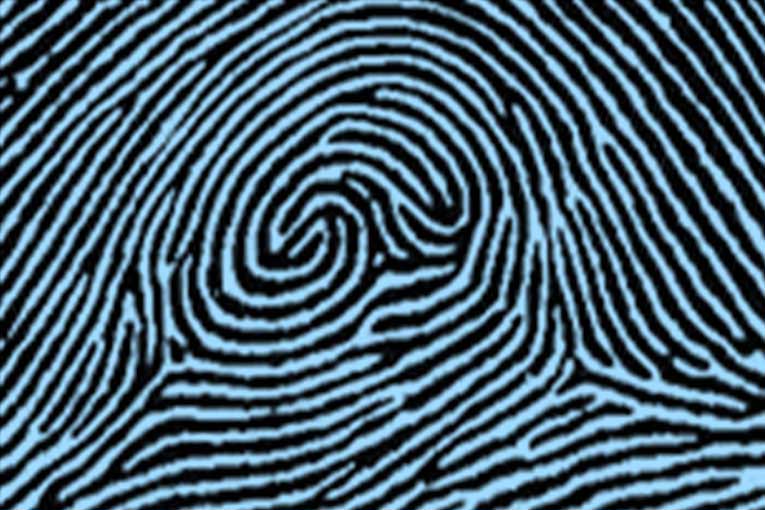
Accidental patterns defy traditional classifications like loops or whorls, presenting intricate ridge configurations.
The rarest of the different types of fingerprints, they represent only about 1% to 5% of fingerprint patterns, each carrying its unique narrative.
What Can Fingerprints be Used For?
Fingerprints serve a multitude of purposes beyond their evolutionary function.
Here are several applications of fingerprints:
Criminal Identification
Law enforcement agencies use fingerprints to identify and link individuals to crime scenes.
The distinctiveness of each person’s fingerprints allows for precise identification.
Forensic experts analyse fingerprints found at crime scenes to establish connections between suspects, victims, and locations.
This aids in solving crimes and building strong cases.
Access Control
Fingerprint recognition is widely used for access control systems.
Whether it’s unlocking a smartphone or gaining entry to secure facilities, fingerprints provide a secure and unique identification method.
This adds an extra layer of security to devices like smartphones, laptops, and even bank accounts.
Immigration and Border Control
Fingerprinting is commonly employed in immigration and border control processes.
It helps authorities verify the identity of individuals entering or leaving a country.
This adds an extra layer of security to travelling.
Financial Transactions
In some instances, fingerprints are used for secure financial transactions.
This includes accessing bank accounts, making payments, and other financial activities.
Medical Records
In some healthcare systems, fingerprints may be used to access medical records securely.
This ensures that only authorised individuals can retrieve sensitive health information.
Historical and Archaeological Studies
Fingerprints on historical artefacts or documents can provide insights into the people who interacted with them.
This can be valuable in historical and archaeological research.
Why are Certain Types of Fingerprints Rarer than Others?
The rarity of different fingerprint patterns can be attributed to a combination of genetic and developmental factors.
Here are some scientific reasons why certain types of fingerprints are rarer than others:
Genetic Variation
The formation of fingerprint patterns has a genetic component.
While there are common patterns like loops, whorls, and arches, the specific details, ridge counts, and configurations are influenced by a person’s genetic makeup.
Genetic diversity within populations contributes to the rarity of certain patterns.
Developmental Processes
Fingerprint patterns are established in the womb during foetal development.
The interplay of genetic instructions and environmental factors during this critical period results in the uniqueness of each individual’s fingerprint.
The specific conditions and events during development contribute to the rarity of certain patterns.
Randomness in Ridge Formation
The ridges in fingerprints are formed due to complex interactions between genetic factors and physical forces during development.
The randomness in the emergence of ridge patterns, even among individuals with similar genetic backgrounds, adds to the diversity and rarity of specific fingerprint types.
Environmental Influences
Factors such as blood flow, amniotic fluid, and pressure in the womb can influence the development of fingerprint patterns.
These environmental variations contribute to the uniqueness of each person’s fingerprints and the rarity of certain patterns.
Biological Stochasticity
Stochastic events, or random variations, during the early stages of fingerprint ridge formation contribute to the individuality of each fingerprint.
These stochastic processes add an element of unpredictability, leading to the rarity of certain configurations.
Combination of Factors
The rarity of fingerprint patterns is not solely due to genetic factors but is a result of the intricate interplay between genetic instructions, environmental influences, and random events during development.
This combination of factors ensures that each person’s fingerprint is truly unique, with certain patterns being more uncommon than others.
Conclusion
Fingerprints, with their intricate patterns, not only define our individuality but also stand as a testament to the marvels of nature’s design.
The uniqueness of the types of fingerprints adds an extra layer of uniqueness, making them an indispensable tool in forensic science and personal identification.
As technology advances, fingerprints continue to play a crucial role in ensuring security, solving crimes, and enhancing various aspects of our daily lives.
https://securityjournaluk.com/types-of-fingerprints/
Published: 2024 02 07 08:00:00
Received: 2024 02 07 08:44:44
Feed: Security Journal UK
Source: Security Journal UK
Category: Security
Topic: Security
Views: 13
